Key takeaways:
- Sous vide cooking allows for precise temperature control, ensuring perfect doneness and enhanced flavors in food.
- Investing in quality equipment, such as a sous vide immersion circulator and a vacuum sealer, is crucial for successful outcomes.
- Choosing high-quality ingredients and experimenting with marinades enhances the sous vide experience, bringing out the best flavors.
- Common challenges include mastering cooking times, maintaining temperature consistency, and perfecting the vacuum sealing process.
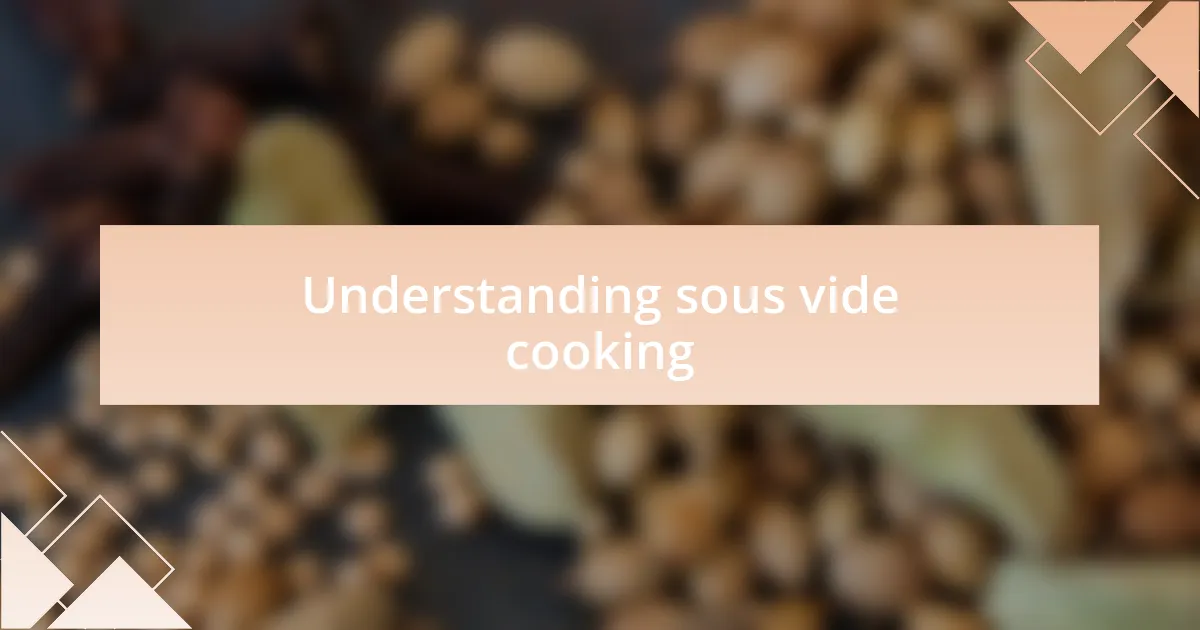
Understanding sous vide cooking
Sous vide cooking is all about precision. At the heart of it, this method involves sealing food in a vacuum bag and cooking it slowly in a water bath at a consistent temperature. I remember the first time I tried it—I was both curious and skeptical. Can cooking in such a simple setup really yield restaurant-quality results? My experience proved that it absolutely can.
What struck me as I delved deeper into sous vide was how it transforms the cooking paradigm. Instead of worrying about overcooking, I found a new kind of freedom in the kitchen. The food retains its juices and flavors, creating an experience that’s truly satisfying. Have you ever bitten into a perfectly tender steak that practically melts in your mouth? That’s the magic of sous vide—achieving results I previously thought were unattainable.
Moreover, sous vide offers unparalleled versatility; you can use it for everything from meats to vegetables, and even desserts. I vividly recall preparing a batch of root vegetables this way, keeping them vibrant and delicious. It’s moments like these that make cooking feel less like a chore and more like a creative outlet. Understanding sous vide means embracing the art of patience, allowing flavors to develop fully, which truly elevates the culinary experience.
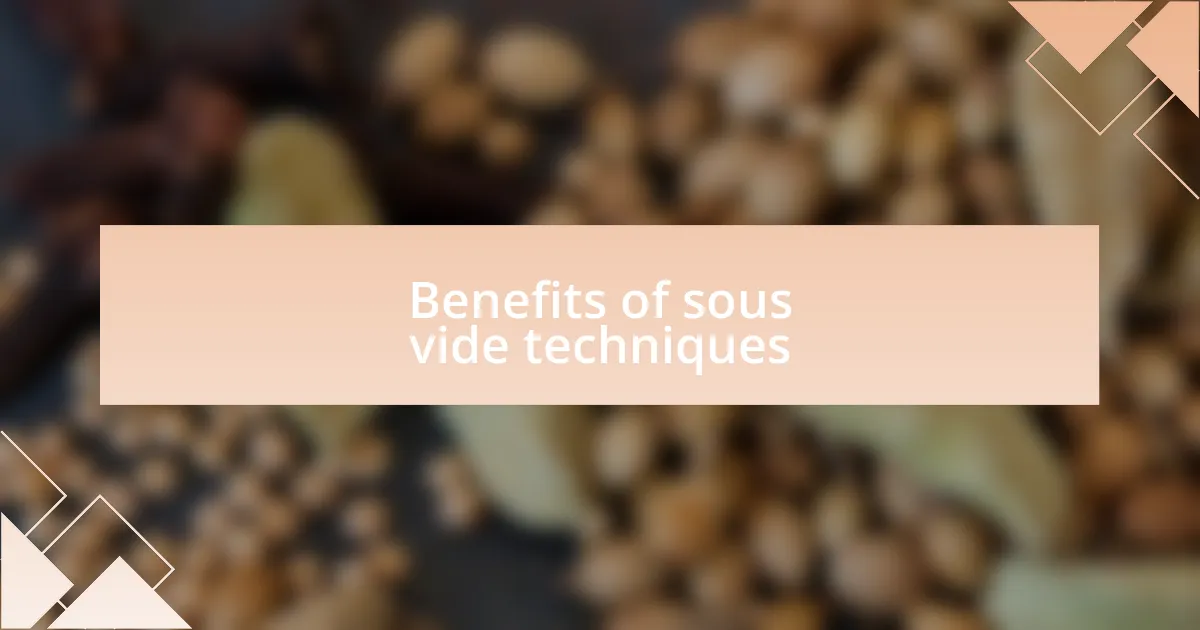
Benefits of sous vide techniques
Sous vide cooking boasts remarkable precision, allowing you to achieve perfect doneness every time. I remember a dinner party where I prepared a pork loin using this method; it emerged as tender as a cloud, with each bite exploding with flavor. It’s hard to believe that such reliability comes from a simple water bath, yet that’s the brilliance behind sous vide.
One of the most delightful benefits is the ability to infuse flavors deeply and evenly. I often experiment with marinating proteins for hours before cooking, and it never fails to impress. Have you ever tasted a chicken breast that was not only juicy but also packed with herbs and spices? That’s the effect of the sous vide technique—ensuring every bit of seasoning permeates the food completely.
Additionally, sous vide cooking promotes meal prep convenience. I once batch-cooked several portions of steak, vacuum-sealed them, and froze all but one. It was a game changer! Whenever I wanted a quick, gourmet meal, all I had to do was drop a bag into the water bath. The ease of having ready-to-cook meals while ensuring top-notch quality is an invaluable benefit for any home chef.
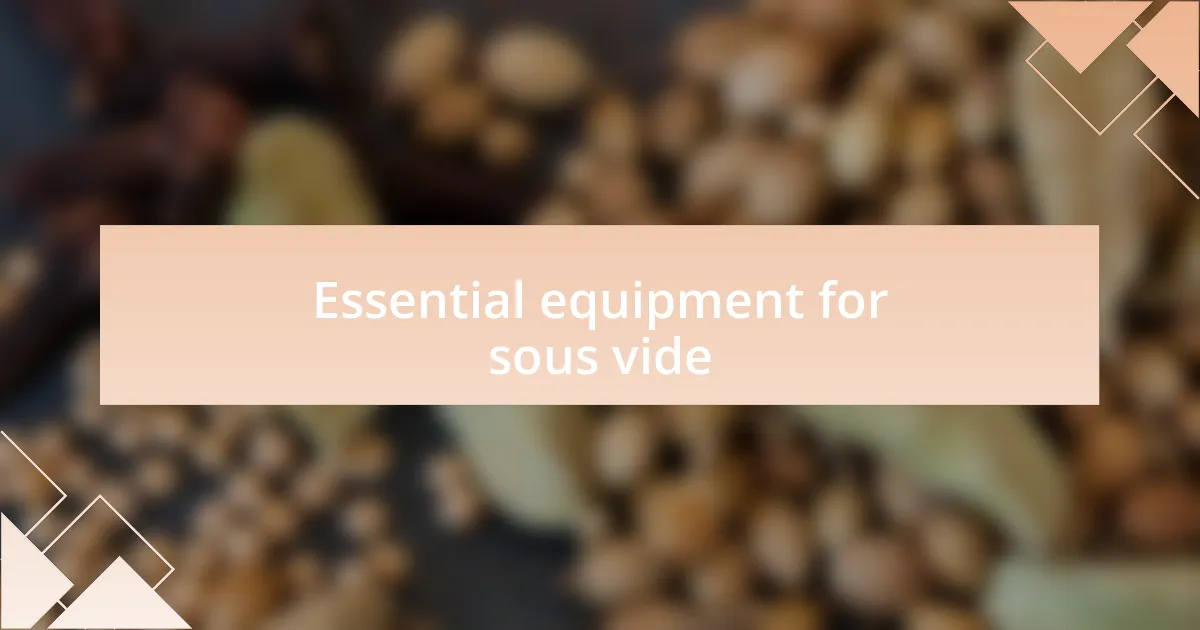
Essential equipment for sous vide
When it comes to essential equipment for sous vide cooking, the sous vide immersion circulator is your star player. This device ensures precise temperature control, which I discovered dramatically elevates the cooking experience. Having used various models, I can confidently say that investing in a durable circulator will minimize guesswork and maximize your culinary successes.
Next up is the vacuum sealer, which is key to the process. Initially, I tried using regular plastic bags, but they just couldn’t handle the pressure of cooking in water. When I finally purchased a proper vacuum sealer, it was like night and day; food sealed tightly retains flavor and moisture in ways I hadn’t anticipated. Isn’t it fascinating how a simple piece of equipment can make such a significant difference?
Lastly, I learned that having a reliable container is just as important as the other tools. I use a large polycarbonate container for larger cuts of meat, and it’s surprisingly efficient at maintaining water temperature. The first time I cooked a whole duck in it, I was amazed at how evenly it cooked—definitely a memorable moment that made me appreciate the right equipment.
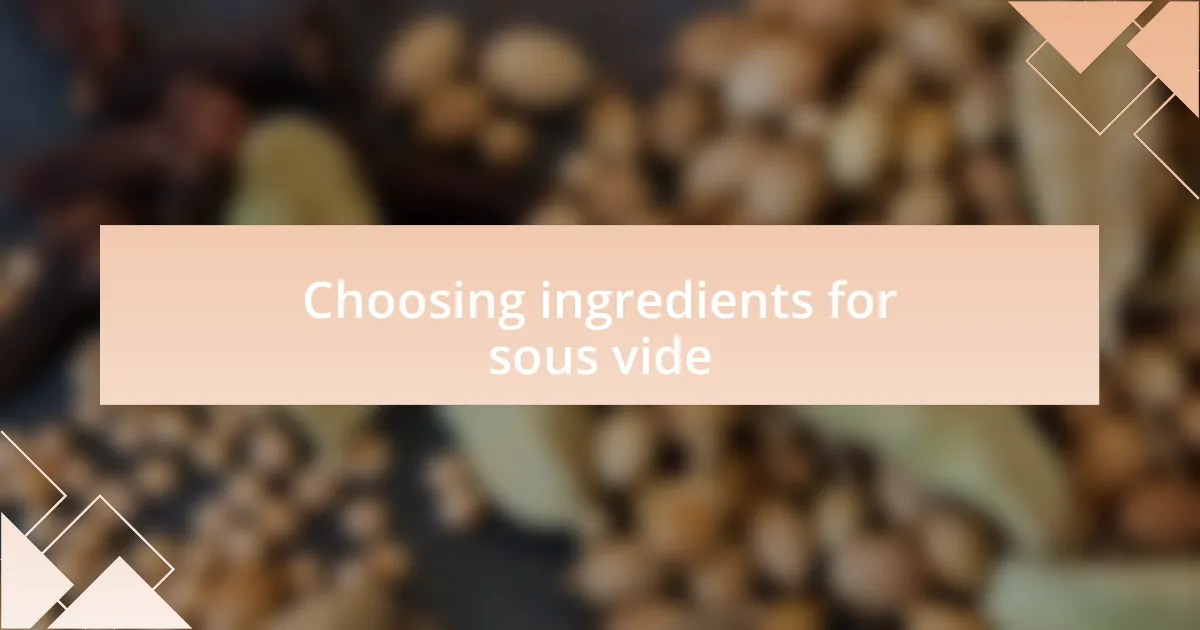
Choosing ingredients for sous vide
Choosing ingredients for sous vide is a game changer in the culinary world. When I first ventured into sous vide, I focused primarily on the type of meat. I quickly realized that the quality of your ingredients truly makes a difference; fresh, high-quality cuts yield amazing results. Have you ever savored a perfectly cooked steak that just melted in your mouth? That’s what you get when you prioritize your ingredients.
Fruits and vegetables also shine in this cooking method, surprising me with their concentrated flavors after sous vide preparation. I experimented with carrots and was astounded at how their sweetness intensified, contrasting beautifully with the slight crunch they retained. It makes me wonder—how often do we overlook the potential of simple vegetables in this technique?
Don’t forget about the seasoning! Early on, I played around with herbs and spices, discovering that the sous vide process helps to meld flavors in ways I had never experienced before. For instance, a sprig of rosemary in the bag with some chicken can transport your dish to a whole new level. It’s almost like an alchemy of taste; you get a sense of excitement just thinking about the flavor combinations waiting to be discovered.
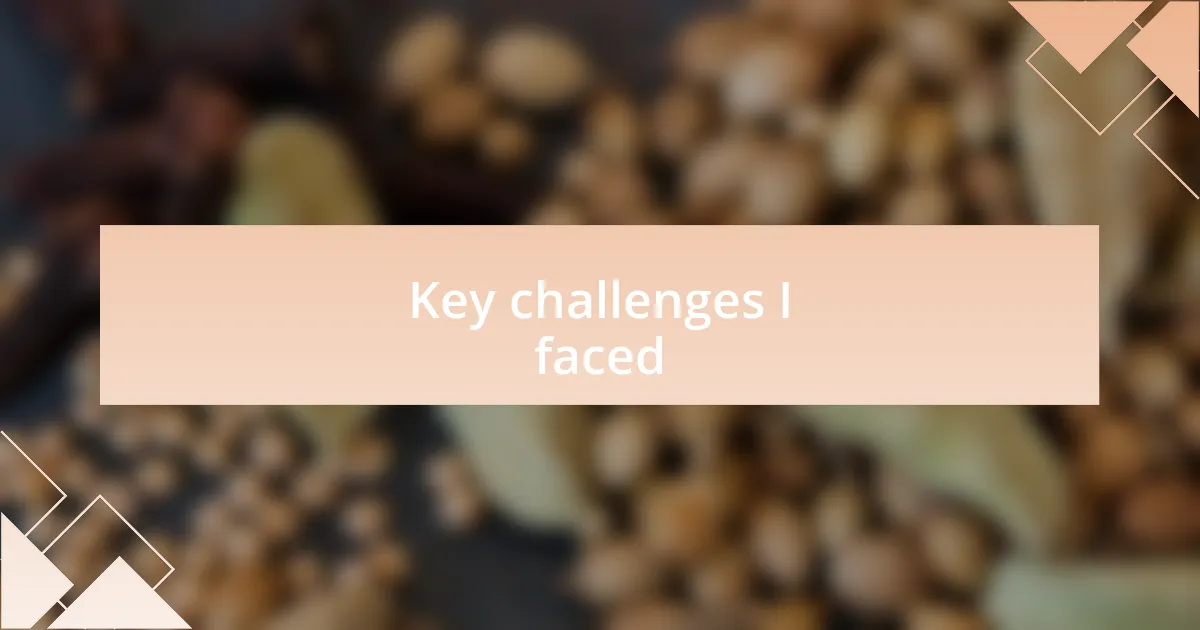
Key challenges I faced
One of the significant challenges I faced was mastering the timing. Initially, I struggled with determining how long to cook different ingredients. For example, I overcooked my first chicken breast, turning it from juicy to dry – a heartbreaking mistake. It made me realize the importance of precision; using a timer became my best friend in the kitchen.
Another hurdle was temperature control. I recall a moment when I set the sous vide to a specific temperature, only to find it fluctuating because my immersion circulator wasn’t calibrated correctly. That day, I learned the hard way that even the slightest variation could ruin a dish. How could something so simple cause such a big problem? I understood that investing in a reliable machine was crucial for consistent results.
Lastly, I grappled with packaging and sealing. It might seem trivial, but vacuum sealing had a learning curve of its own. I once watched my food float to the top of the water bath because I hadn’t sealed the bag properly. Frustration washed over me, but it also motivated me to perfect my sealing technique. Was I ready to give up? Absolutely not! Instead, I turned that challenge into an opportunity to improve my skills and ensure my culinary creations came out just right.